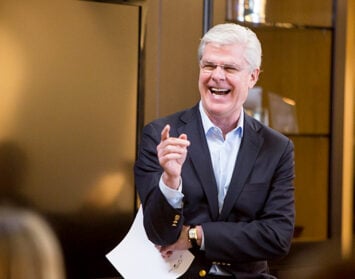Why small spaces need big perks to keep employees happy.
By Jason Hughes
The tech industry has done amazing things for humanity and its contributions are ubiquitous in virtually everything we do. It comes as no surprise that the tech industry also forced the old-school commercial office space world to re-evaluate its boring, vanilla, box-like past. With the help of creative architects and planners, office space is striking a balance between work and life.
For the first half of the 20th century, office space consisted of wooden desks grouped in rows, sometimes hundreds of them. In the ’60s, Herman Miller created the office cubicle, which has since been demonized as one step removed from living under a freeway overpass. The idea was to provide at least a minimal sense of privacy for individuals. And while that was transformative, we’ve now come full-circle with many companies returning to completely open workstations and virtually zero privacy. Unlike the old days, however, the new office model boasts a generous amount of community space peppered with areas for individual seclusion.
Most of us remember the days of studying at library carrels in a 2′ x 3′ desk with partitions to minimize distractions. Including room for a chair that “area” consisted of about 15 square feet of space. Working in a minimal space for short bursts is tolerable. And studying for midterms in a library carrel in order to avoid your noisy roommate is different than working a full-time job. But is cramming bodies into less space the right long-term move?
Today’s office worker averages 175 square feet of space – down from 225 square feet in 2010, and 275 square feet in 2007. Now, at 78% of the size from the pre-2010 era (64% of pre-2007), are companies benefiting? Are their employees?
Yes – and no. Everyone has read about Google’s amazing cafeterias, massage rooms, and park-like environments, but many company decision-makers look at Google’s offices and focus only on the high-density employee benching areas. They want to implement that, but not the perks. These companies are reverting to the pre-’60s era of cramming bodies into space. In the short run, companies with this mindset find themselves “real estate efficient,” but see employee engagement and culture plummet over time. This ultimately results in decreased retention and poor recruiting, and can be the beginning of a long, downward corporate spiral.
Google and other leading tech companies have invested millions of dollars hiring psychology experts to understand how good office space design and efficiencies can be exploited to create positive economic returns. Piggybacking on their learning has its benefits, but only if you emulate all aspects – not just the fiscally friendly ones!
While tech companies have lessened the stigma of minimizing space per employee, many others who seek to emulate them forget how overwhelmingly generous they are with their perks. Google’s philosophy is to “create the happiest, most productive workplace in the world.” Most planning experts are pushing for a substantial increase in amenity space – often devoting upwards of 15% of the entire space to cafeterias, game rooms, etc. This is in addition to ample collaboration and meeting space.
So what’s next? What else will the Googles of the world teach the rest of us about office space? Many progressive companies are now fine-tuning the “engagement” aspect of their space. That includes having space employees truly look forward to being in, where they can share ideas while also having the privacy they need at times. How fortunate would society be if employees everywhere felt like “going to the office” was a wonderful privilege rather than a necessary evil?
We can all learn from the tech leaders who have charted the best ways before us. Less is not more when it comes to office space. Those who sacrifice overall space efficiencies in the name of economics will suffer long-term mediocrity as a result.
This article first appeared in Hatch, a publication of San Diego Magazine.
Jason Hughes is founder of Hughes Marino, an award-winning commercial real estate company with offices across the nation. A pioneer in the field of tenant representation, Jason has exclusively represented tenants and buyers for more than 30 years. Contact Jason at 1-844-662-6635 or jason@hughesmarino.com to learn more.











